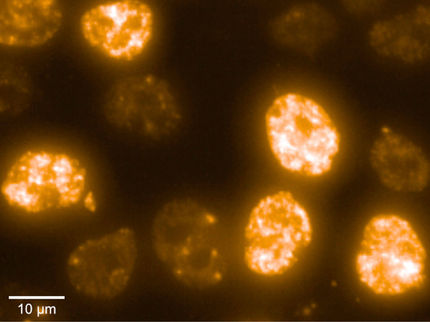Chromosomal acrobatics help protect against cancer
Advertisement
Scientists at IFOM have used an experimental approach to create a three-dimensional view of the process that helps to protect DNA stability and defend us against spontaneous cancer-causing mutations. The discovery, published in Cell advances theunderstanding of the molecular basis of cancer and opens new avenues in the development of targeted anti-cancer therapies.
The health of our cells is dependent on the correct regulation of a series of mechanisms that control the process of cell division. During replication, the highly twisted DNA in the mother cell is doubled and each of the daughter cells will receive a complete genetic inheritance. In order to do this, the DNA in the mother cell needs to be unwound. During this delicate phase, the DNA undergoes torsional stresses that can lead to the accumulation of DNA damage and, consequently, cancer.
What the team of scientists, led by Marco Foiani, Scientific Director of IFOM (FIRC Institute of Molecular Oncology) and Full Professor of Molecular Biology at the University of Milan (Department of Biomolecular Sciences and Biotechnology) discovered was that during cell division the unwound DNA forms a circular spatial pattern similar to the “loop-the-loop” performed by acrobatic aeroplanes, the formation of which is regulated by the protein Top2.
Normal cells possess a network of specialized proteins, which guarantee that DNA replication is carried out correctly. These proteins help to inhibit the formation of knots in the entwined DNA strands that could otherwise lead to potentially dangerous chromosomal breakages. One such protein is Topoisomerase 2 (Top2) that ‘snips’ the unwinding DNA double helix so reducing the tension between the two strands while stretching them out to allow DNA replication.
“Thanks to a new experimental approach we have uncovered a very specific role of Top2 in the physical regulation of replication and transcription that prevents the “collision” of these processes” explains Foiani “We have discovered a new sophisticated spatial organization of DNA: DNA strands are arranged in a circular formation similar to the “loop-the-loop” maneuver performed by acrobatic aeroplanes. These loop structures, regulated by Top2, ensure that DNA replication and transcription are spatially and physically separated and cannot interfere or overlap with each other”. If the “loop” maneuver is not correctly coordinated by Top2, an aberrant chromosomal architecture may develop and, as a consequence, cancer-causing DNA breakages can occur. This process helps to protect against the onset of cancer caused by genomic instability that may occur during cell division even in the absence of external risk factors.
“As a result of a technique developed in our laboratory we were able to observe, for the first time, the simultaneous execution of two crucial cellular processes: replication and transcription” – explains Rodrigo Bermejo, first author of the paper.
The observation offers new perspectives for the characterization of the cellular processes that allow cancer cells to survive and, hence, for the identification of new drug targets for anticancer therapy. “The identification of the processes that protect the integrity of the genome and its spatial organization – explains Foiani – significantly enhances our understanding of the molecular events underlying the onset of cancer, and forms the basis for the identification of new drugs that specifically target cancer cells without causing damage to the genome of normal cells”.

























































